- Home
- Blake Pierce
Waiting (The Making of Riley Paige—Book 2) Page 6
Waiting (The Making of Riley Paige—Book 2) Read online
Page 6
Crivaro fell silent for a moment.
Then he glanced over at Riley and asked, “How are you holding up?”
“Fine,” Riley said.
“Are you sure?” Crivaro asked. “You look kind of pale, like you’re not feeling well.”
It was true, of course. A combination of morning sickness and the shock of what she’d just seen had definitely gotten to her. But the last thing in the world she wanted to tell Crivaro was that she was pregnant.
“I’m fine,” Riley insisted.
Crivaro said, “I take it you got some gut feelings about the killer back there.”
Riley nodded silently.
“Anything more I should know—aside from the possibility that he’d scared the victim to death?”
“Not much,” Riley said. “Except that he’s …”
She hesitated, then found the word she was looking for. “Sadistic.”
As they drove on in silence, Riley found herself remembering the spectacle of the body splayed atop the gurney. She felt a resurgence of horror that the victim had to suffer such humiliation and indignity even in death.
She wondered what kind of monster would wish this on anybody.
As close as she’d momentarily felt to the killer, she knew that she couldn’t begin to understand the sick workings of his mind.
And she was sure she didn’t want to.
But was that what was in store for her before this case was over?
And what about afterward?
Is this what my life is going to be like?
CHAPTER EIGHT
As Riley and Crivaro walked into the clean, air-conditioned J. Edgar Hoover Building, she still felt the ugliness of the murder scene clinging to her. It was as if the horror had gotten into her very pores. How was she ever going to shake it off—especially the smell?
During the drive here, Crivaro had assured Riley that the smell she’d noticed in the field hadn’t been from the body. As Riley had guessed, it was just from the trash left scattered from the carnival. Janet Davis’s body hadn’t been dead long enough to produce much of a smell—and neither had the bodies of Riley’s murdered friends when she’d found them back in Lanton.
Riley still hadn’t experienced the stench of a decomposing corpse.
Crivaro had said as they drove …
“You’ll know it when you smell it.”
It wasn’t something Riley looked forward to.
Again, she wondered …
What do I think I’m doing here?
She and Crivaro took an elevator to a floor occupied by dozens of forensic labs. She followed Crivaro down a hall until they came to a room with a sign that said “DARKROOM.” A lanky, longhaired young man stood leaning next to the door.
Crivaro introduced himself and Riley to the man, who nodded and said, “I’m Charlie Barrett, forensic tech. You got here just in time. I’m taking a break after processing the negatives out of that camera they found at Lady Bird Johnson Park. I was just going back in to make some prints. Come on in.”
Charlie led Riley and Crivaro into a short hallway bathed in amber-colored light. Then they passed through a second door into a room awash with the same weird light.
The first thing that really struck Riley was the pungent, acrid smell of chemicals.
Curiously, she didn’t find the smell to be at all unpleasant.
Instead, it seemed almost …
Cleansing, Riley realized.
For the first time since she’d left the field where they’d found the body, that clinging, sour stench of trash was gone.
Even the horror lifted somewhat, and Riley’s nausea disappeared.
It was a true relief.
Riley peered around through the dim, alien light, fascinated by all the elaborate equipment.
Charlie held up a sheet of paper with rows of images and examined it in the dim light.
“Here are the proofs,” he said. “It looks like she was one hell of a photographer. A shame what happened to her.”
As Charlie laid out strips of film on a table, Riley realized that she’d never been in a darkroom before. She’d always taken her own rolls of exposed film to a drugstore to be processed. Ryan and some of her friends had recently bought digital cameras, which didn’t use film at all.
Janet Davis’s husband had told McCune that his photographer wife had used both kinds of cameras. She tended to use a digital camera for her professional work. But she considered the shots she was taking in the park artwork, and she preferred the film cameras for that.
Riley thought that Charlie also seemed to be an artist, a true master at what he was doing. That made her wonder …
Is this a dying art?
Would all this skilled work with film, paper, instruments, thermometers, timers, valves, and chemicals someday go the way of blacksmithing?
If so, it seemed rather sad.
Charlie began to make the prints one by one—first enlarging the negative onto a piece of photographic paper, then slowly soaking the paper in a basin of developing liquid, followed by further soakings in what Charlie called a “stop bath” and a “fix bath.” Then came a long rinse over a steel sink under tap water. Finally Charlie hung the pictures by clips to a rotating stand.
It was a slow process, and a quiet one. The silence was only broken by the trickling sounds of liquid, the shuffling of feet, and a few words spoken from time to time in what seemed almost like reverential whispers. It just didn’t feel right to talk loudly here.
Riley found the stillness and the slowness to be almost eerily soothing after the noisy disorder at the murder scene, when cops had been struggling to keep reporters at bay.
Riley watched raptly as the images revealed themselves over several long minutes—ghostly and indistinct at first, then finally with sharp clarity and contrast when they hung dripping from the stand.
The black and white photographs captured a quiet, peaceful evening at the park. One showed a wooden footbridge extending over a narrow passage of water. Another seemed at first to be of a flock of seagulls taking flight, but when the image came into clearer focus Riley realized that the birds were part of a large statue.
Another photo showed a rough-hewn stone obelisk with the Washington Monument towering far in the distance. Other images were of paths for biking and walking that passed through wooded areas.
The pictures had clearly been taken as sunset approached, creating soft gray shadows, glowing halos, and silhouettes. Riley could see that Charlie had been correct in his opinion that Janet Davis had been “one hell of a photographer.”
Riley also sensed that Janet knew the park well and had chosen her locations long in advance—and also the time of day, when visitors were few. Riley didn’t see a single person in any of the photos. It was as if Janet had had the park all to herself.
Finally came some shots of a marina, its docks and boats and water fairly shimmering as the sun finally set. The gentle calmness of the scene was truly tangible. Riley could almost hear the gentle lapping of water and the cries of birds, could almost feel the caress of cool air on her cheek.
Then finally came a much more jarring image.
It, too, was of the marina—or at least Riley thought she could make out the shapes of boats and docks. But everything was blurred and chaotic and jumbled.
Riley realized what must have happened at the very moment she’d snapped that picture …
The camera got knocked out of her hands.
Riley’s heart jumped in her throat.
She knew the image had captured the very instant when Janet Davis’s world had changed forever.
In a fraction of a second, tranquility and beauty had turned into ugliness and terror.
CHAPTER NINE
As Riley stared at the blurred image, she wondered …
What happened next?
After the camera was knocked from the woman’s hands, what happened to her?
What did she experience?
Did she strug
gle against her assailant until he somehow subdued and bound her?
Did she remain conscious throughout her ordeal? Or was she knocked unconscious right there and then, when the picture was taken?
Did she then awaken to the horror of her final moments?
Maybe it doesn’t matter, Riley thought.
She remembered what the ME had said about the likelihood that Janet had died from an overdose of amphetamines.
If that was true, she had actually been frightened to death.
And now Riley was looking at the frozen moment when that fatal terror had really begun.
She shuddered deeply at the thought.
Crivaro pointed to the photo and said to Charlie, “Magnify everything. Not just this one, all the photographs, every square centimeter.”
Charlie scratched his head and asked, “Looking for what?”
“People,” Crivaro said. “Any people you can find. Janet Davis seems to have thought she was alone, but she was wrong. Someone was lying in wait for her. Maybe—just maybe—she caught him on film without realizing it. If you find anybody at all, get as clear a blow-up as you can.”
Although she didn’t say so aloud, Riley felt skeptical.
Will Charlie find anybody?
She had a feeling about the killer—that he was far too stealthy to let himself be accidentally photographed. She doubted that even a microscopic search of the photos would reveal any trace of him.
At that moment, Crivaro’s phone buzzed in his pocket. He said, “That’s got to be McCune.”
Riley and Crivaro left the darkroom, and Crivaro stepped away to take the call. He seemed to be excited by whatever McCune was saying to him. When he ended the call, he said to Riley …
“McCune has located the costume store where Janet Davis took some pictures. He’s on his way there, and says he’ll meet us there. Let’s get going.”
*
When Crivaro pulled up to the store called Costume Romp, Agent McCune was already there waiting in his own vehicle. He got out and joined Riley and Crivaro as they approached the store. It looked to Riley at first like a modest storefront establishment. The front windows were filled with costumes, of course—ranging from a vampire and a mummy to fancy dress outfits suggestive of earlier centuries. There was also an Uncle Sam costume for the upcoming Fourth of July.
When she followed Crivaro and McCune inside, Riley was startled by the vastness of the long brick interior, filled with racks loaded with what appeared to be hundreds of costumes, masks, and wigs.
The sight of so much make-believe took Riley’s breath away. The costumes included pirates, monsters, soldiers, princes and princesses, wild and domestic animals, space aliens, and every other kind of character she could imagine.
It boggled Riley’s mind. After all, Halloween only came once a year. Was there really a year-round market for all these costumes? If so, what did people want with them?
A lot of costume parties, I guess.
It occurred to her that she shouldn’t be surprised, considering the horrors she was starting to learn about. In a world where such awful things happened, it was small wonder that people wanted to escape into fantasy worlds.
It also wasn’t surprising that a talented photographer like Janet Davis would enjoy taking photographs here, in the midst of such a rich array of images. No doubt she used real film here, not a digital camera.
The monster masks and costumes reminded Riley of a TV show she’d enjoyed during the last couple of years—the story of a teenage girl who fought and slew vampires and other kinds of demons.
Lately, though, Riley had found that show less appealing.
After learning about her own ability to enter a killer’s mind, the saga of a girl with superpowers and super-obligations now seemed to cut a little too close to home for comfort.
Riley, Crivaro, and McCune looked all around but didn’t see anybody.
McCune called out, “Hello—is anybody here?”
A man stepped out from behind one of the costume racks.
“May I help you?” he asked.
The man cut a startling figure. He was tall and extremely thin, wearing a long-sleeved T-shirt that was printed to resemble a tuxedo. He was also wearing familiar “Groucho” glasses—the kind with an enormous white nose, black-rimmed glasses, and bushy eyebrows and a mustache.
Obviously taken somewhat aback, Crivaro and McCune took out their badges and told the man who they and Riley were.
Seeming utterly unsurprised to be visited by the FBI, the man introduced himself as Danny Casal, the owner of the business.
“Just call me Danny,” he said.
Riley found herself waiting for him to take off the nose glasses. But as she looked at him more closely, she realized …
Those are prescription glasses.
They also had remarkably thick lenses. Danny Casal apparently wore these glasses all the time, and he surely would be quite myopic without them.
McCune opened a manila folder.
“We have photos of two women,” he said. “We need to know if you’ve ever seen either of them.”
The eyebrows and fake nose and mustache all bobbed up and down as Danny nodded. He struck Riley as a peculiarly serious and dour man to be wearing such a getup.
McCune pulled out one photo and held it for the shop owner to see.
Danny peered at the photo through his glasses.
He said, “She’s not one of our regular customers. I can’t guarantee that she’s never been in the shop, but I don’t recognize her.”
“You’re sure?” McCune asked.
“Quite positive.”
“Does the name Margo Birch mean anything to you?”
“Uh, maybe something in the news. I’m not sure.”
McCune pulled out another photo. “What about this woman? We believe she came to your establishment to take pictures.”
Riley, too, looked closely at the photograph. This must be Janet Davis. It was the first time she’d seen her living, unpainted face—smiling and happy and unaware of the terrible fate that awaited her.
“Oh, yes,” Casal said. “She was in here not long ago. Janet something.”
“Davis,” Crivaro said.
“That’s right,” Casal said with a nod. “A nice lady. A nice camera too—I’m something of a photography buff myself. She offered to pay me to let her take pictures here, but I wouldn’t accept. I was flattered that she found my establishment worthy of her efforts.”
Casal tilted his head and looked at his visitors.
“But I don’t suppose you’re here with good news about her,” he said. “Is she in some kind of trouble?”
Crivaro said, “I’m afraid she was murdered. Both of these women were.”
“Really?” Casal said. “When?”
“Margo Birch was found dead five days ago. Janet Davis was murdered the night before last.”
“Oh,” Casal said. “I’m sorry to hear that.”
Riley barely noticed any change in his tone of voice or facial expression
McCune changed tactics. He asked, “Do you sell clown costumes here?”
“Of course,” Casal said. “Why do you ask?”
McCune abruptly took another photo out of his folder. Riley almost gasped when she got a look at it.
It showed another dead woman dressed in a clown costume. She was splayed on concrete next to an alley dumpster. The costume was similar to the one that Janet Davis, the victim found in the park this morning, had worn—puffy fabric with huge pompom buttons. But the colors and patterns were somewhat different, and so was the makeup.
Margo Birch, Riley realized. The way she was found.
McCune asked Casal, “Do you sell costumes like this one?”
Riley noticed that Crivaro was scowling at McCune. McCune was obviously testing Casal’s response to the photo, but Crivaro seemed to disapprove of his blunt approach.
But like McCune, Riley was curious as to how the man was going to react.
<
br /> Casal turned to look at Riley. She simply couldn’t read his expression. In addition to the bushy eyebrows and mustache, she could now see how really thick the lenses were. Although he was surely making eye contact with her, it didn’t look like it. Refracted through the lenses, his eyes appeared to be directed slightly elsewhere.
It’s like he’s wearing a mask, Riley thought.
“Is this Ms. Davis?” Casal asked Riley.
Riley shook her head and said, “No. But Janet Davis’s body was found in a similar condition this morning.”
Still with no change in his tone of voice, Casal said to McCune …
“In answer to your question—yes, we do sell this sort of costume.”
He led his visitors over to a long rack full of clown costumes. Riley was startled at how varied they were.
As Casal browsed among some tattered jackets and baggy, patched up pants, he said, “As you can see, there are several different types of clowns. For example, there’s the ‘tramp’ here, often personified as a hobo or a vagabond, with a worn-out hat and shoes, sooty sunburned makeup, a sad frown, and a painted stubble of beard. The female equivalent is often a bag lady.”
He moved on to group of more motley costumes.
“Somewhat related to the tramp is the ‘Auguste,’ a traditional European type, more of a trickster than a vagabond, an underling and a flunky. He wears a red nose and mismatched clothes and alternates between inept clumsiness and agile cunning.”
Then he shuffled through some costumes that seemed to be mostly white, some of them spangled and with colored trim.
He said, “And here we have the traditional European whiteface, the ‘Pierrot’—composed, poised, graceful, intelligent, always in control. His makeup is simple—completely white, with regular features painted in red or black, like a mime, and he often wears a conical hat. He’s an authority figure, often Auguste’s boss—and not a very nice boss. Small wonder, though, since many of Auguste’s jokes are at his expense.”
He moved through dozens of wildly different costumes, saying …
“Now here we’ve got lots of different ‘character’ clowns, based on types familiar from everyday life—cops, maids, butlers, doctors, firemen, that kind of thing. But here’s the type you’re looking for.”

_preview.jpg) Once Gone (a Riley Paige Mystery--Book #1)
Once Gone (a Riley Paige Mystery--Book #1)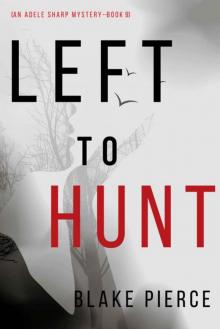 Left to Hunt (An Adele Sharp Mystery—Book Nine)
Left to Hunt (An Adele Sharp Mystery—Book Nine) Left to Kill (An Adele Sharp Mystery—Book Four)
Left to Kill (An Adele Sharp Mystery—Book Four) LURING
LURING If She Hid
If She Hid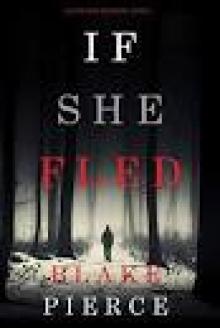 If She Fled
If She Fled Already Gone (A Laura Frost FBI Suspense Thriller—Book 1)
Already Gone (A Laura Frost FBI Suspense Thriller—Book 1) Vengeance in Vienna
Vengeance in Vienna Once Shunned
Once Shunned Left To Run
Left To Run Face of Fury (A Zoe Prime Mystery--Book 5)
Face of Fury (A Zoe Prime Mystery--Book 5) Blake Pierce - Kate Wise - 5 - If She Fled
Blake Pierce - Kate Wise - 5 - If She Fled IF SHE RAN
IF SHE RAN Left to Envy (An Adele Sharp Mystery—Book Six)
Left to Envy (An Adele Sharp Mystery—Book Six) Silent Neighbor
Silent Neighbor Her Last Wish (A Rachel Gift FBI Suspense Thriller—Book 1)
Her Last Wish (A Rachel Gift FBI Suspense Thriller—Book 1) Almost Lost
Almost Lost Before He Harms
Before He Harms Murder (and Baklava) (A European Voyage Cozy Mystery—Book 1)
Murder (and Baklava) (A European Voyage Cozy Mystery—Book 1) Left to Vanish (An Adele Sharp Mystery—Book Eight)
Left to Vanish (An Adele Sharp Mystery—Book Eight) THE PERFECT IMAGE
THE PERFECT IMAGE The Perfect Affair (A Jessie Hunt Psychological Suspense Thriller—Book Seven)
The Perfect Affair (A Jessie Hunt Psychological Suspense Thriller—Book Seven) Left To Die
Left To Die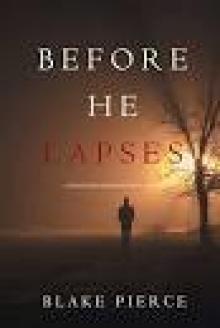 BEFORE HE LAPSES
BEFORE HE LAPSES Left to Prey (An Adele Sharp Mystery—Book Eleven)
Left to Prey (An Adele Sharp Mystery—Book Eleven)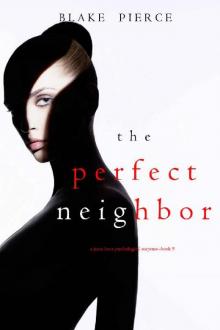 The Perfect Neighbor (A Jessie Hunt Psychological Suspense Thriller—Book Nine)
The Perfect Neighbor (A Jessie Hunt Psychological Suspense Thriller—Book Nine) Almost Dead
Almost Dead The Perfect Wife
The Perfect Wife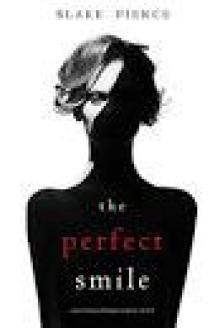 The Perfect Smile
The Perfect Smile If She Saw
If She Saw Left To Die (An Adele Sharp Mystery—Book One)
Left To Die (An Adele Sharp Mystery—Book One) City of Prey: An Ava Gold Mystery (Book 1)
City of Prey: An Ava Gold Mystery (Book 1) Stalking
Stalking Face of Darkness (A Zoe Prime Mystery—Book 6)
Face of Darkness (A Zoe Prime Mystery—Book 6) The Perfect Mistress (A Jessie Hunt Psychological Suspense Thriller—Book Fifteen)
The Perfect Mistress (A Jessie Hunt Psychological Suspense Thriller—Book Fifteen) Girl, Vanished (An Ella Dark FBI Suspense Thriller—Book 5)
Girl, Vanished (An Ella Dark FBI Suspense Thriller—Book 5) The Perfect Block
The Perfect Block Left to Fear (An Adele Sharp Mystery—Book Ten)
Left to Fear (An Adele Sharp Mystery—Book Ten) Almost Gone (The Au Pair—Book One)
Almost Gone (The Au Pair—Book One) The Perfect Facade (A Jessie Hunt Psychological Suspense Thriller—Book Twelve)
The Perfect Facade (A Jessie Hunt Psychological Suspense Thriller—Book Twelve) The Perfect Affair
The Perfect Affair Once Chosen (A Riley Paige Mystery—Book 17)
Once Chosen (A Riley Paige Mystery—Book 17) Girl, Alone (An Ella Dark FBI Suspense Thriller—Book 1)
Girl, Alone (An Ella Dark FBI Suspense Thriller—Book 1) Face of Murder (A Zoe Prime Mystery—Book 2)
Face of Murder (A Zoe Prime Mystery—Book 2)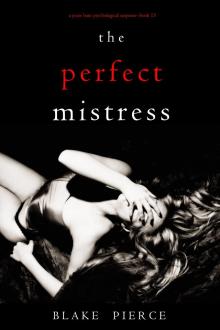 The Perfect Mistress
The Perfect Mistress Crime (and Lager) (A European Voyage Cozy Mystery—Book 3)
Crime (and Lager) (A European Voyage Cozy Mystery—Book 3) Before He Harms (A Mackenzie White Mystery—Book 14)
Before He Harms (A Mackenzie White Mystery—Book 14) Face of Fear
Face of Fear Left to Murder (An Adele Sharp Mystery—Book Five)
Left to Murder (An Adele Sharp Mystery—Book Five)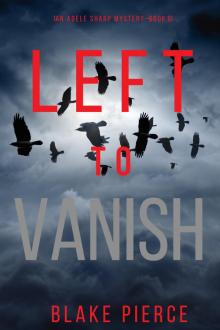 Left to Vanish
Left to Vanish The Perfect Secret (A Jessie Hunt Psychological Suspense Thriller—Book Eleven)
The Perfect Secret (A Jessie Hunt Psychological Suspense Thriller—Book Eleven) The Perfect Deceit (A Jessie Hunt Psychological Suspense Thriller—Book Fourteen)
The Perfect Deceit (A Jessie Hunt Psychological Suspense Thriller—Book Fourteen) Blake Pierce - The Making of Riley Paige - 4 - Taking
Blake Pierce - The Making of Riley Paige - 4 - Taking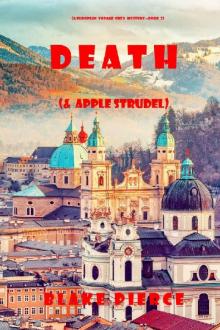 Death (and Apple Strudel) (A European Voyage Cozy Mystery—Book 2)
Death (and Apple Strudel) (A European Voyage Cozy Mystery—Book 2) THE PERFECT HOUSE
THE PERFECT HOUSE Cause to Save
Cause to Save Face of Fear (A Zoe Prime Mystery—Book 3)
Face of Fear (A Zoe Prime Mystery—Book 3) Stalking (The Making of Riley Paige—Book 5)
Stalking (The Making of Riley Paige—Book 5) A Neighbor's Lie
A Neighbor's Lie The Perfect Neighbor
The Perfect Neighbor Once Dormant
Once Dormant A Trace of Crime
A Trace of Crime CAUSE TO DREAD
CAUSE TO DREAD Already Missing (A Laura Frost FBI Suspense Thriller—Book 4)
Already Missing (A Laura Frost FBI Suspense Thriller—Book 4) Waiting
Waiting If She Knew
If She Knew If She Feared (A Kate Wise Mystery—Book 6)
If She Feared (A Kate Wise Mystery—Book 6) Left To Run (An Adele Sharp Mystery—Book Two)
Left To Run (An Adele Sharp Mystery—Book Two) Left to Lapse (An Adele Sharp Mystery—Book Seven)
Left to Lapse (An Adele Sharp Mystery—Book Seven)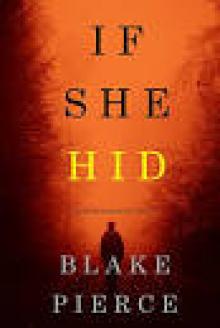 If She Hid (A Kate Wise Mystery—Book 4)
If She Hid (A Kate Wise Mystery—Book 4) The Perfect Alibi (A Jessie Hunt Psychological Suspense Thriller—Book Eight)
The Perfect Alibi (A Jessie Hunt Psychological Suspense Thriller—Book Eight) Once Taken
Once Taken Before He Envies
Before He Envies Before He Sins
Before He Sins Mackenzie White 07-Before He Sins
Mackenzie White 07-Before He Sins ONCE BOUND
ONCE BOUND Once Buried
Once Buried Waiting (The Making of Riley Paige—Book 2)
Waiting (The Making of Riley Paige—Book 2) Riley Paige 11-Once Buried
Riley Paige 11-Once Buried Once Forsaken (A Riley Paige Mystery—Book 7)
Once Forsaken (A Riley Paige Mystery—Book 7)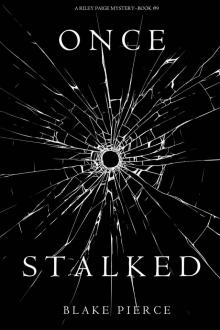 Once Stalked (A Riley Paige Mystery—Book 9)
Once Stalked (A Riley Paige Mystery—Book 9) The Perfect Disguise (A Jessie Hunt Psychological Suspense Thriller—Book Ten)
The Perfect Disguise (A Jessie Hunt Psychological Suspense Thriller—Book Ten) ONCE TRAPPED
ONCE TRAPPED Watching
Watching Keri Locke 02-A Trace of Muder
Keri Locke 02-A Trace of Muder Cause to Hide
Cause to Hide Once Hunted
Once Hunted Cause to Kill (An Avery Black Mystery—Book 1)
Cause to Kill (An Avery Black Mystery—Book 1) Before He Preys
Before He Preys Once Pined
Once Pined A Trace of Hope
A Trace of Hope Once Craved (a Riley Paige Mystery--Book #3)
Once Craved (a Riley Paige Mystery--Book #3) Once Lured
Once Lured Before He Sees (A Mackenzie White Mystery—Book 2)
Before He Sees (A Mackenzie White Mystery—Book 2) Before he Kills (A Mackenzie White Mystery—Book 1)
Before he Kills (A Mackenzie White Mystery—Book 1) Keri Locke 03-A Trace of Vice
Keri Locke 03-A Trace of Vice Once Cold
Once Cold ONCE LOST
ONCE LOST Before He Takes
Before He Takes Before He Covets (A Mackenzie White Mystery—Book 3)
Before He Covets (A Mackenzie White Mystery—Book 3) BEFORE HE NEEDS
BEFORE HE NEEDS